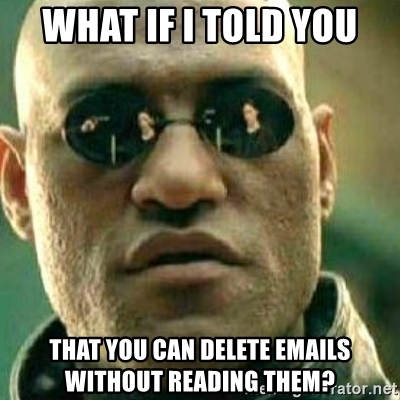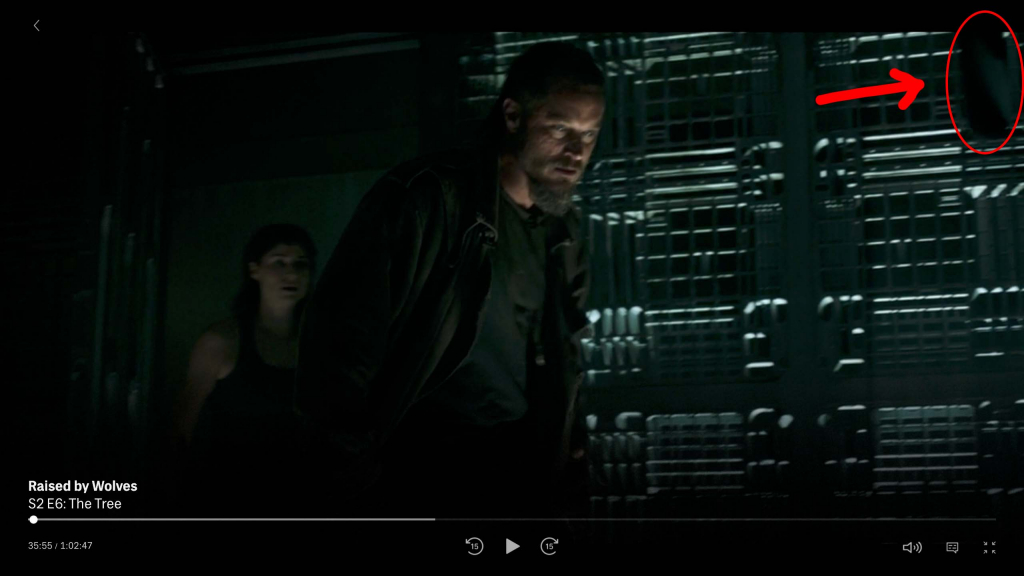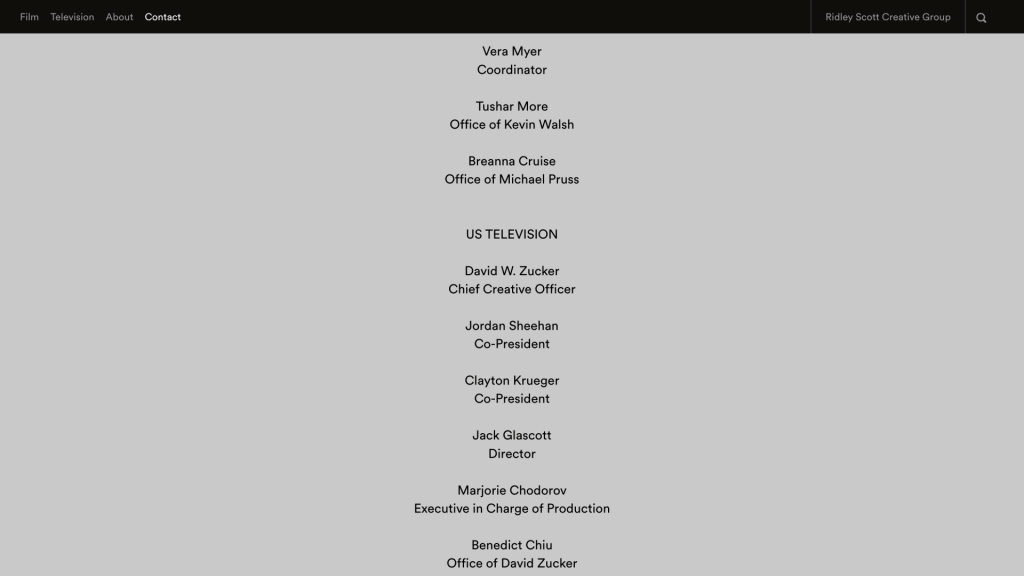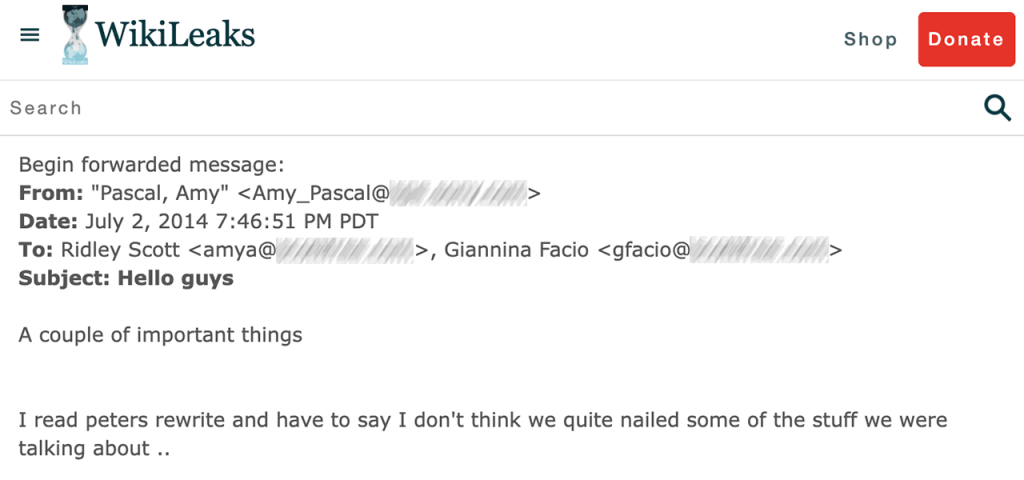You’re looking for someone. You don’t even know who the person is, but you’ve got something that needs to be said or shared. You want to find this person (whoever they are) and reach out in a manner that he or she is most likely to see—and ideally, respond.
This might sound like a vague proposition, but that’s only because such circumstances vary wildly. You might have any number of reasons to legitimately reach out to a complete stranger. In many cases, you might be looking to contact someone at an organization. The larger the organization, the harder it is to zero in on the right person. Sometimes, even determining the right organization is a task.
If you’re at square one—no information on hand—where do you begin?
I’m going to give you one such example from start to finish. It’s niche. It’s unlikely to be completely transferable to your situation. But some of these online research skills should be helpful in a variety of scenarios. At the least, I hope it inspires you to try to reach out to a stranger yourself. Even high profile individuals are surprisingly accessible on the internet.
Chapter One: In Which a Film Nerd Sees a Boom Mic
I was recently watching an episode of Raised by Wolves—a science fiction show on HBO Max. I have a film and video background. I’m also kind of OCD. I mention this to say, I don’t watch things the way other people do. I seldom fall under the spell of motion pictures: I’m dissecting everything I see.
In one episode, I saw a flash of something. I didn’t quite catch it, but I knew it was wrong. I went back, and sure enough, there it was—a boom mic.
To the filmmakers’ credit, it lasted a handful of frames at most. It blended in with the background and got lost in the motion of the camera. But it was clearly there.
This sort of thing doesn’t slide in Hollywood. If a boom mic is in the shot, and anyone catches it, it’s getting fixed. It’s not hard. It doesn’t have to be re-filmed: there’s software that will rotoscope it right out of the shot.
If we’re talking about a 10 year old mistake, maybe it’s not getting fixed. But in this case, on an active show—in an episode that had just debuted a week prior—they’d likely want to fix it. At that point in time, it’s a relatively light lift. The crew is still assembled. The video assets are reasonably accessible (read: not in deep storage). It would cost some amount of money, but that’s pocket change in the grand scheme of things.
Even so, I often wouldn’t have bothered pursuing something like this any further. HBO Max has tens of millions of subscribers. I couldn’t possibly have been the only one who caught it?
I did a quick Google search—different variations on “raised by wolves” and “boom mic” and “the tree”. It’s often a good idea to append the word “reddit” to your searches; Reddit is a wealth of topical information. All of this turned up nothing.
If the crew missed it, and the internet wasn’t talking about it, it’s hard to believe but maybe I had discovered a problem that no one was aware of. I also knew for a certainty that the filmmakers would want to know about it. This was information worth conveying to someone who could act upon it.
This is a crucial part of reaching out to a complete stranger: don’t waste their time. We’re all busy. These Hollywood types work an obscene number of hours. When you’re stretched thin at work, how do you feel when some asshole sends you unsolicited emails?

But who on earth do you contact regarding something like this?
Chapter Two: In Which the Right Person is Identified
Raised by Wolves is available for streaming on HBO Max. Perhaps someone else would have started by reaching out to HBO Max support. That would have been a mistake. Those people aren’t responsible for the content; they’re running a streaming service. If there was a problem with the website—a technical issue of some sort—they’d be the people to contact.
So who actually produces this show? The Internet Movie Database (IMDb) knows: here’s their listing for Raised by Wolves. There are numerous subpages for each film/show. One of those is the company credits.
We can see here that HBO Max is merely a distributor. They are not involved in the show’s production. IMDb shows four production companies:
- Film Afrika Worldwide
- Lit Entertainment Group
- Scott Free Productions
- Studio T
Oftentimes, you can persistently Google your way to the information you’re looking for. I could have investigated all of those companies, paring back the field to a shortlist of likely producers. But it’s helpful if you’re not entirely out of your depth. I once worked in Hollywood, and I have friends who still do.
I know, for example, that on any given production, one company is in charge. One company developed this property. The others were brought on later, to serve different functions.
Again, I could have Googled my way to that answer, but I didn’t have to. I know that the most prominent name attached to this show is director Ridley Scott. He’s an executive producer here. His company is Scott Free Productions.
Now we’re getting somewhere.
Most companies have a website. Many company sites have some form of staff directory. Scott Free is no exception.
It’s a Spartan affair—names and job titles only. It’s ironic, really, that they chose to put this information on their contact page, when there are no actual contact details provided for anyone.
They don’t want to be contacted. These people aren’t running a sandwich shop: they make movies and television shows watched by millions. If their contact information was public, the emails would never end. They couldn’t manage their own inboxes.

But I’m getting ahead of myself: who was the right person to contact here?
The answer to this question eventually came from a mix of general business knowledge, industry understanding, research, and educated guesses. Sometimes you’ve got to use all your skills—and be lucky besides.
Calling up the episode timeline, fixing the shot, bouncing a new master, re-doing the encodes… this was staff time and machine time we’re talking about. It was going to cost money. In business, the bosses authorize expenditures. That’s true at your job, and that’s true in Hollywood. I put aside any thought of reaching out to an editor or some other post production staffer, even if they were listed on that contact page (they’re not). These people aren’t in charge of their time. They couldn’t drop whatever they were then doing to fix an episode that was already in the can, just because some rando on the internet reached out to them.
In film and television, the people in charge of the budget are the producers. The highest level producer is an Executive Producer. IMDb lists many of them on this show, but only two of them appear on Scott Free’s contact page: Chief Creative Officer David W. Zucker and Co-President Sally Sallerson[1].
Pro tip: if you have options for whom to reach out to, don’t choose the person at the top of the org chart. They probably have more important things to do than correspond with you. But don’t aim too low either.
Just go one rung lower.
Sally Sallerson works under David Zucker. I settled on Sally being the most likely person to notify of this issue.
Chapter Three: In Which We Guess at Email Addresses
For the sake of privacy, I’m not going to be as detailed in this chapter as I could. I successfully reached out to Sally. That doesn’t mean I should share her contact details with the world.
When an email address is not public, as in this case, how does one figure out what it may be?
Personal email addresses can be tricky, if not impossible, to guess. Business email addresses, however, are much, much easier. The vast majority of the time, a company’s staff email addresses are set up at the same domain as their company website. Whatever Sally’s email address was, it was safe to assume it was going to be at the scottmakesmovies.co[2] domain.
Here’s another pro tip: company email addresses often follow a standard convention. At my current company, we use the staff person’s first initial followed by their full last name. My work email, for example, starts with “jpetersen@”. Small companies sometimes use first names only (“jason@”). Large companies might use a person’s full name (“jason.petersen@”).
Try to suss this out with a simple Google search. Google isn’t always great for email address searches, but you may be able to uncover something. I tried various searches for people @scottmakesmovies.co, including Sally. That’s when I turned up a page on WikiLeaks:
There was a big Sony Pictures hack in 2014. A lot of emails were stolen. Not-so-fun fact: I was one of the victims. All of my personal information is out there thanks to this hack (please don’t steal my identity). On the plus side, I scored a few Scott Free email addresses.

What have we learned here? First off, I confirmed that Scott Free employees do indeed have their email addresses set up at the company domain. I also learned that Ridley Scott doesn’t do email: Amya might have been his assistant at the time. That’s likely a first name. Then we’ve got Giannina (Ridley Scott’s wife), using her first initial, last name.
Ugh. I’ll tell you what we’ve learned: it’s like the Wild West at Scott Free. They’re probably not following any convention at all.
Unfortunately, this is not unusual. It’s a difficulty, but a minor one. It just means you’ll have to guess at it. Sally’s email would certainly follow one of the handful of forms I detailed above.
Chapter Four: In Which an Email is Composed
Feeling reasonably sure I was going to stumble upon the right email address, it was then time to compose a message.
Hopefully this is the easy part, though here are a few simple (but crucial) rules to follow:
- Choose a subject line that clearly expresses the reason you’re writing. If you put “Hey” in the subject line, guess where your message is going? Straight to the trash. You’re sending an unsolicited email here. Their knee-jerk reaction is going to be to delete it outright. You have this small subject line to convince them not to. Don’t squander it.
- Keep your email succinct. If you find yourself composing a novella, it doesn’t matter if it’s a valuable message: no one will read it. Say what needs to be said in as few words as possible.
Despite your best efforts, they might delete your message anyway. Some people have zero time for unsolicited emails. If they don’t want to be reached, you’re not going to reach them. Results are not guaranteed. But if you’re writing them for a good reason, and you keep it succinct, you’re giving yourself the best odds.
Here’s what I composed to Sally:
Subject: Boom mic visible: Raised by Wolves, “The Tree”
Hi [Sally],
I wanted to raise to someone’s attention that there’s a clear boom mic showing in “The Tree”: Season 2, Episode 6 of Raised by Wolves. Image attached, with timestamp.
I love the show.
Cheers,
Jason
What have I done here? I made the best subject line I could, starting with “Boom mic visible”. I can imagine her reading those words, muttering under her breath, “the hell there is!” If I got that reaction, I knew she’d open it. She’d want to know if this was real.
I gave her the episode name and number. I attached the same screenshot I embedded at the top of this post. That image shows a timestamp of 35:55. That’s all the information she would need to confirm the issue and act upon it.
I threw in “I love the show” on a whim. It’s four words and unlikely to have a negative effect on this communication. I just wanted to share my appreciation. People like being appreciated.
I tried sending this message to one email address; it bounced. I tried a second: it did not bounce. Not bad for guesswork!
The second message was sent at 9:05am Eastern Time. That’s 6:05am Pacific—early, even for a producer. Four hours later, at 10:19am Pacific, I received a response:
Thanks! I’ll make post aware.
You might not consider such a short response to be a big win, don’t let the length fool you.
- She responded, and she did it quickly. That means she read my message and thought it was worthy enough to send a reply.
- She thanked me. I even got an exclamation mark.
- She stated an intention to act upon the information I gave her. This is the biggest win, and one she certainly didn’t need to convey to me in any kind of detail—but she did.
This was the best possible outcome I could have achieved. I’m sure I didn’t win any friends at Scott Free; truthfully, I might have ruined someone’s day. But it’s better to know about this issue—and fix it—than for that boom mic to be in the episode forever. I think some small part of Sally was glad I wrote.
I hope you found some value in this example of reaching out to a stranger on the internet. I’ll reiterate: it’s niche. Due to my background and industry knowledge, I was particularly suited to sending this message. But even so, I had no idea where to start and no contacts to help get me there. I figured it out by myself, one step at a time.
You can too!
Footnotes
1: Suffice it to say, Sally Sallerson is not this person’s actual name.
2: That is totally not the company domain.


